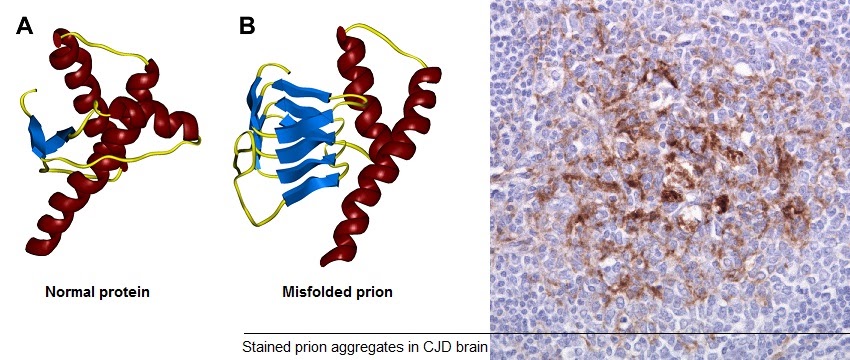It is strange to think of proteins as infectious agents. More commonly, viruses, bacteria and parasites are thought of as infectious agents. They invade their host, use up its resources and damage it in the process, in order to propagate themselves.
Proteins are much smaller and simpler. How could they possible be agents of infection?
Meet prions. These proteins are able to propagate their misfolded state to other proteins by transmitting their template over. The new proteins being misfolded through the prions in the host result in malfunction and disease.
Aggregates of these “contaminated”, misfolded proteins form into beta sheets and are very difficult to disrupt. Their accumulation in cells and tissues causes damage.

It is possible to contract prion disease through ingesting sources rich in prions. There are specific prion diseases that are neurodegenerative and develop in humans (Creutzfeldt-Jakob Disease, CJD) or animals (Bovine Spongiform Encephalopathy, BSE a.k.a. mad cow disease, in cows; and scrapie in sheep and goats).
CJD and scrapie are very lethal, while BSE has a very long, up to several year progression, and exhibits symptoms such as limping and excessive sensory reactions. CJD presents neurodegenerative symptoms including dementia, seizures and anxiety.
The exact source of these diseases is hard to trace, because prions can get transmitted very easily through many routes and are almost impossible to truly destroy. Therefore, control of contaminated individuals and…
